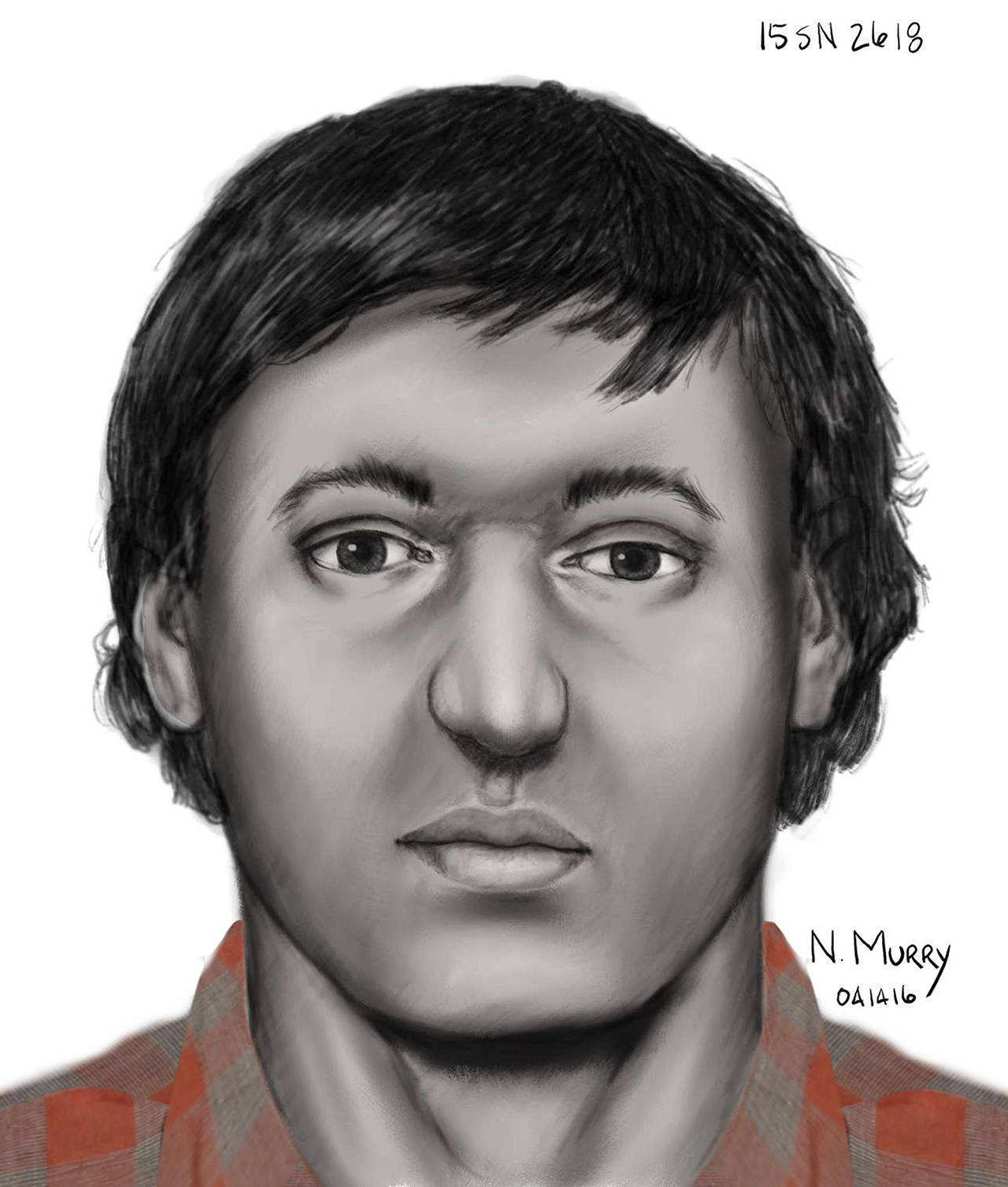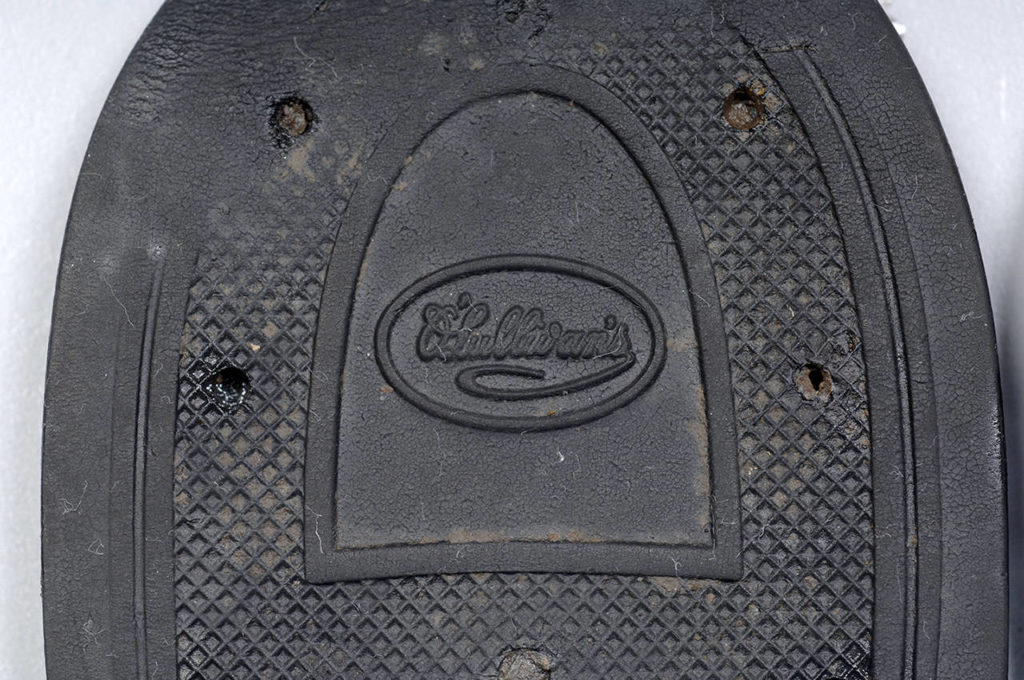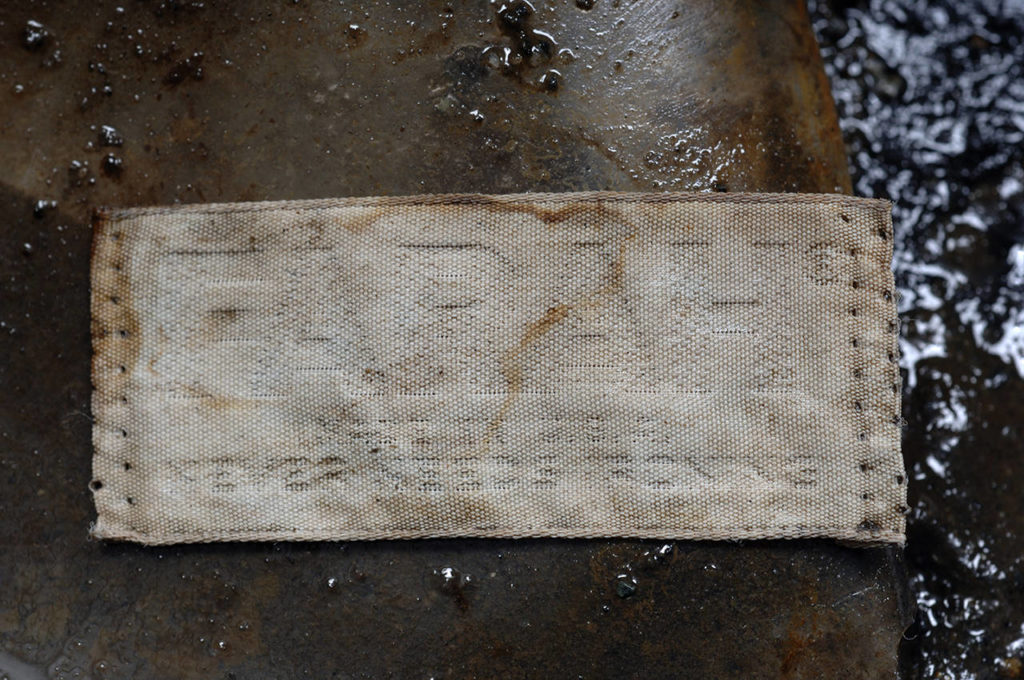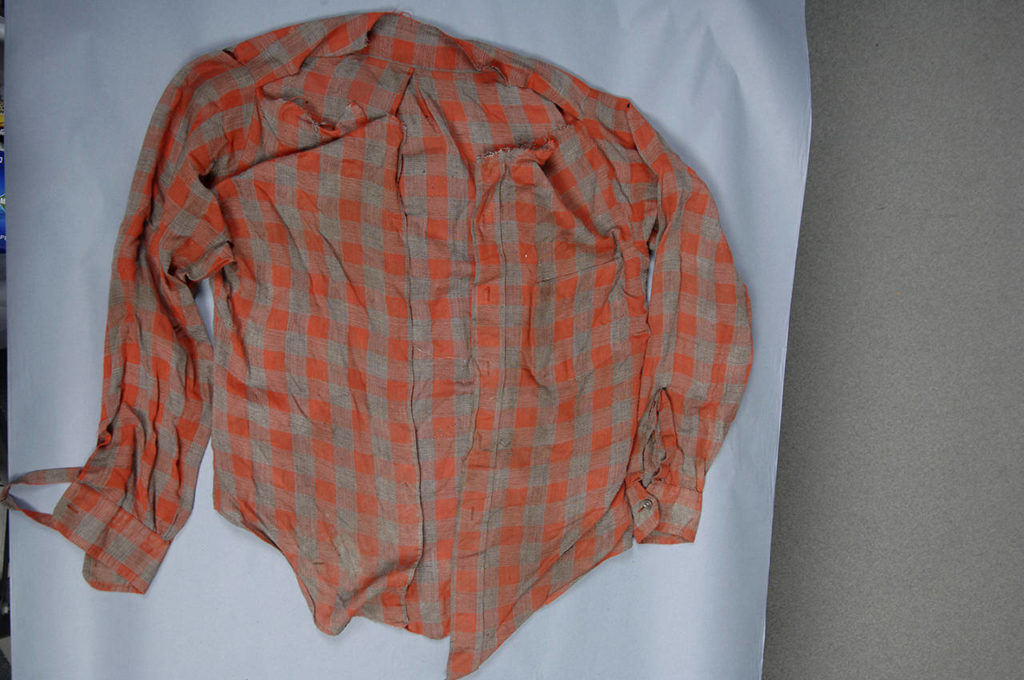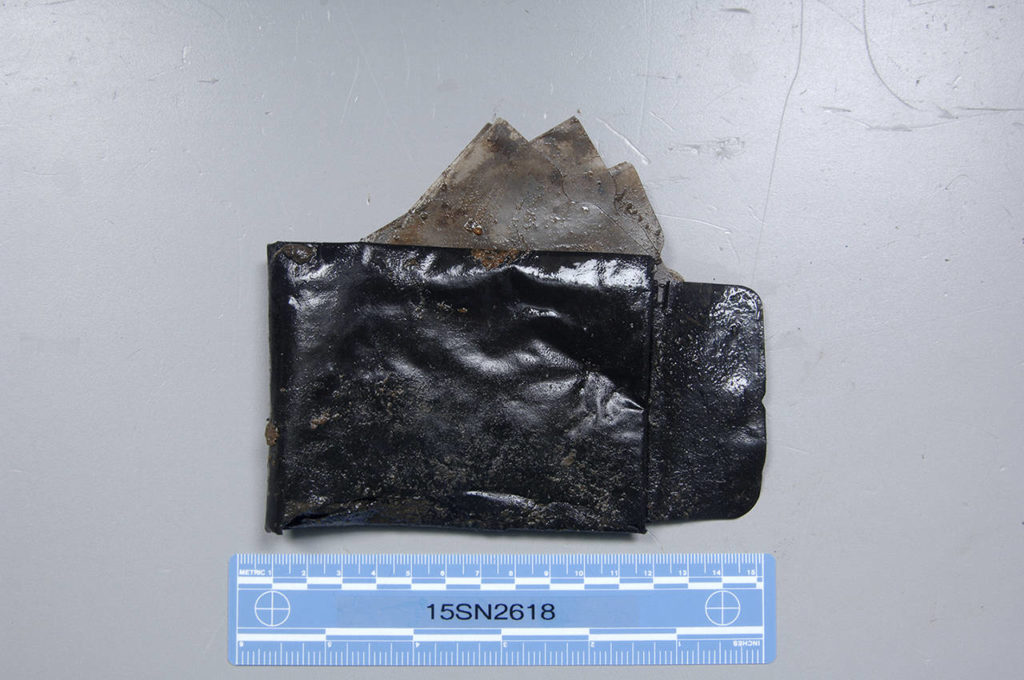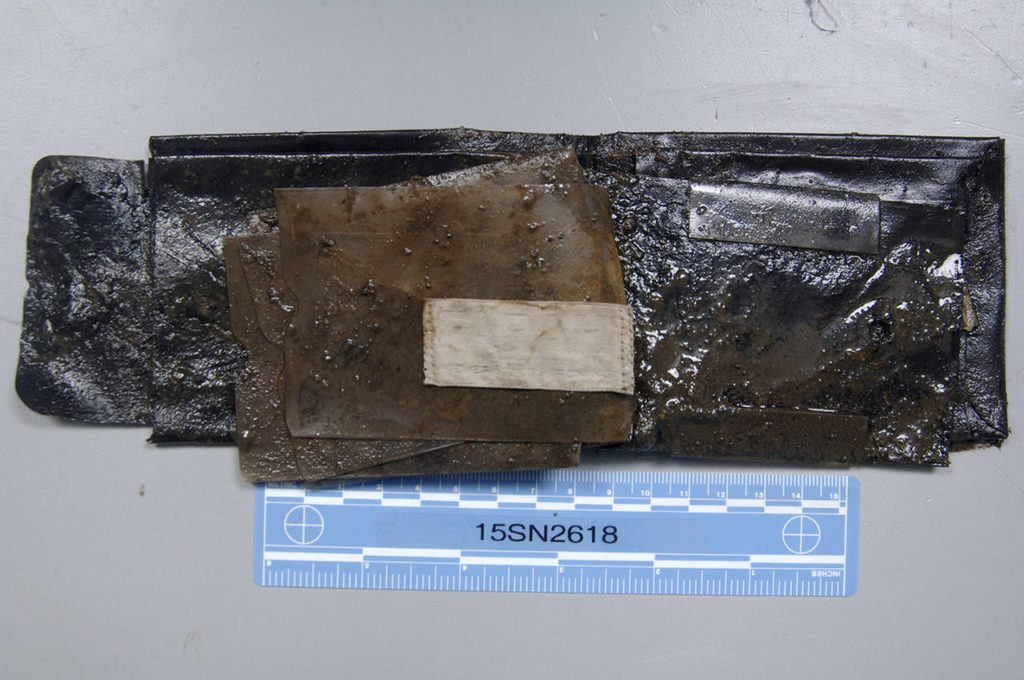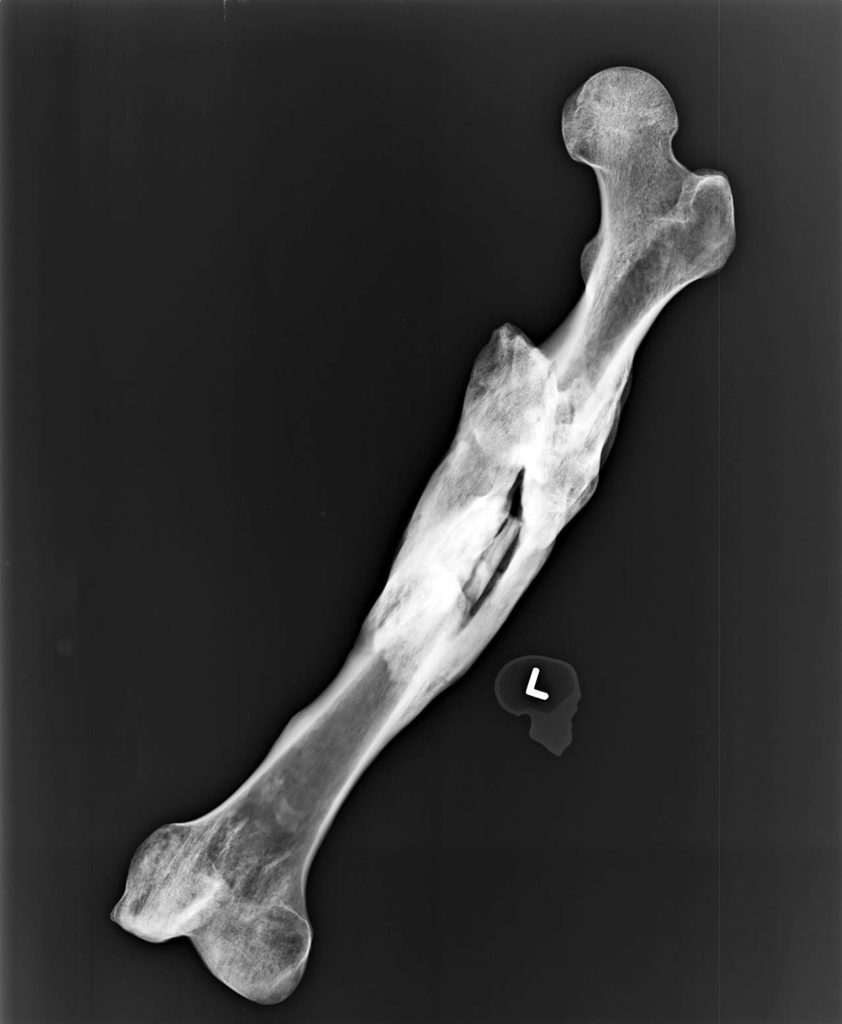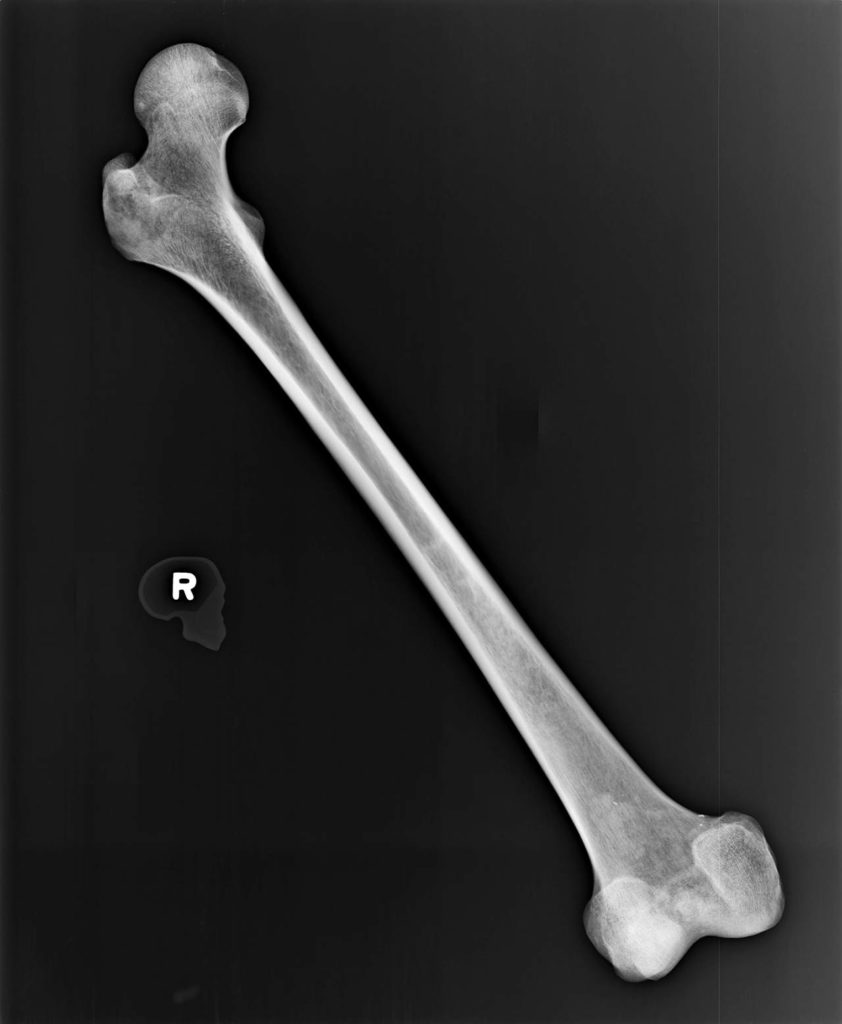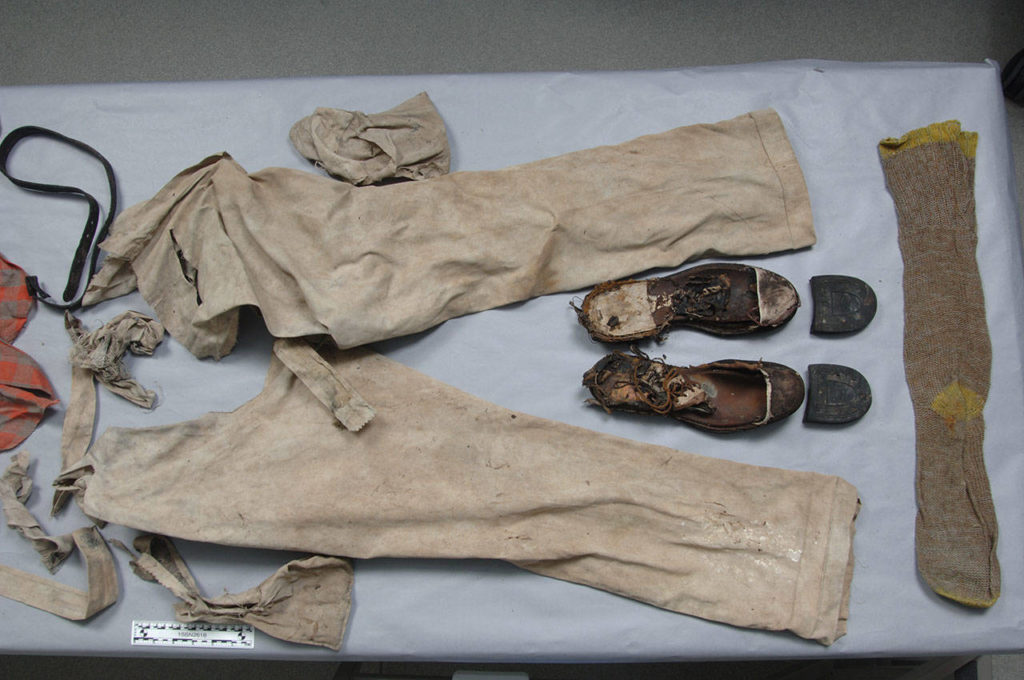EVERETT — A duck hunter spied the shoe first in the mudflats north of Everett, where two sloughs bend together before flowing to Puget Sound.
A cold spell was ending Jan. 3, 1979, and for the first time in a week, the air warmed above freezing. The man in the mud had been dead for much longer — months, at least.
His shoe, a leg bone and a tan pair of Farah pants were together in the delta, by a 12-foot-tall wooden piling. The hunter searched around a fallen cedar log. Just west of the shoe he saw a red checkered shirt. Five feet farther west were the skull, rib bones and another low-quarter black leather shoe, with a foot inside.
Forty years later, we don’t know the dead man’s name. We don’t know how his remains ended up west of the railroad bridge that runs along Highway 529.
He could have been swept down the Snohomish River. From the way the river fans into the sea, it seems more likely to cold case detective Jim Scharf that the body washed in from the sound, to the confluence of Steamboat and Union sloughs. Or maybe he drowned within view of the muddy grave, at the west tip of what is known, on some maps of the estuary, as North Spencer Island.
He is one of more than a dozen unidentified people found dead since the 1970s in Snohomish County. Investigators have been taking a fresh look at these cases, in light of 21st century advances in DNA technology and genetic genealogy.
Detectives hope that by releasing certain details and photos for the first time, the public can help to finally identify the Spencer Island John Doe.
Tips can be directed to the Snohomish County Sheriff’s Office at 425-388-3845.
Bad break
Picture a bone, the kind caricatured on a dog treat: smooth, straight and normal, with two knobs on each end. That’s a rough idea of the man’s right femur, the biggest and strongest bone in the body.
On his left side, he’d been living with a shattered thigh.
The X-ray shows the middle third of the bone stuck out like the claw of an ice scraper. We know he lived with it broken like that, because it healed, in a horrific way.
He would’ve stood two inches shorter on his left leg.
The break has telltale signs of a fracture that was never reset, according to the Snohomish County Medical Examiner’s Office. It grew worse over time.
Detectives believe he shuffled around on the injury for years, perhaps. There’s little doubt that he lived with chronic pain.
“We’ve never seen a fracture that healed like that,” Scharf said. “It’s almost like he was in a Third World country, or he just avoided medical help altogether.”
An awkward gait could be an unforgettable thing that has lingered four decades in the memory of a friend, family member or employer. It’s such a striking oddity it could lead to a tip, a name and answers for the man’s family.
But the broken leg is a mystery of its own, too.
“Even if you’re homeless and you broke your leg like that, wouldn’t you go to the ER?” said Jane Jorgensen, an investigator at the medical examiner’s office. “You’re not going to have to pay. Wouldn’t you go and get it fixed?”
At a recent meeting at the sheriff’s office, Jorgensen and Scharf went over the few things we do know, and the many things we don’t know, about the man. They bounced theories off retired Judge Kenneth Cowsert and retired parole supervisor Chuck Wright, who have volunteered on the cold case team for years.
Maybe the man didn’t have a doctor nearby when he got hurt.
Maybe he had an accident on a fishing boat. He could’ve been far offshore of Alaska, with no hope of reaching a hospital.
Maybe he even died on a boat, Scharf suggested. He could’ve slipped overboard, or been buried at sea by other sailors, then drifted on currents until he landed in the mud here.
Closer look
By the looks of his bones, he could have been 30. Or as old as 70.
He would’ve stood 5-foot-1 to 5-foot-7. (A typo on one public bulletin listed his height at a mere 5 feet.)
How long he’d been in the muck is a mystery.
After he died, his life story literally washed away. Whatever he kept in his black wallet had been soaked by shifting tides. No trace remained of a driver’s license, or fishing license, or credit card, if they’d ever been there at all. He had no cash.
He was part skeleton. There was no obvious sign of deadly trauma. The official cause of death went undetermined.
Most likely he was a mix of Caucasian and Native American, according to a forensic anthropologist’s report. So detectives are especially interested in tips from families with tribal heritage.
From his weathered skull, forensic artist Natalie Murry rebuilt the man’s face in 2016. She did not have a lower jaw to work with. So she had to extrapolate. The middle of his face — cheeks and nasal passages — looked fairly flat, Murry said. That’s common in Asian faces, but the bones weren’t sharp enough to tell the artist if he had other Asiatic traits around the eyelids. Based on an exam by forensic anthropologist Dr. Kathy Taylor, the drawing came out vaguely Native and white. The ridge of his brow was strong and masculine. His eyes look somewhat sunken. His haircut, eye color and the exact length of the nose are educated guesses.
The idea is to create a likeness, not a photo.
Clothing found with the body did not give many hints about his job or background. Rich or poor, we all own long-sleeve flannel shirts here in the Pacific Northwest. He wore size 8 or 8½ laced shoes, leather, with an O’Sullivan’s logo printed on the rubber heel. His belt measured 33 to 34 inches long. The tag of the tan pants read: “Never Needs Ironing. Made in U.S.A.” At a vintage store today, you can find the same kind of pants for $59.99. Scharf suspects he’d gotten the clothes secondhand in the 1970s, too.
In life, his smile had a gap. Two of his upper front teeth were missing. So were two molars. The sockets fully healed, meaning he’d lost them while alive. He’d seen a dentist at some point. Three teeth had silver alloy fillings.
“So if this guy is being seen to get fillings in his teeth,” Scharf said, “how come he isn’t being seen to get a broken leg set, so it heals properly?”
He could’ve gotten the dental work done when he was young, living with his parents, and then fell on hard times later, Jorgensen said. Prison is a place where people can get teeth filled for free, too.
Dead ends
Some fishing line was tangled in the trousers.
That could have washed up with him, or long after the death.
Authorities waited 2½ months for someone to claim the man. No one did.
The body was lowered into a pauper’s grave in March 1979, at Cypress Memorial Memorial Park. Bulletins went out to the Tulalip and Stillaguamish tribes when the grave was exhumed in 2015.
After an article ran in The Daily Herald that summer, Scharf and local detectives chased a promising tip about a farmhand in Marysville. He’d known the operator of an Everett fruit stand. The handyman drank heavily, walked with a severe limp and went missing around the end of the 1970s.
It seemed like a pretty good lead at the time, Scharf said. A month later they found the man’s tombstone in Yuma, Arizona, on BillionGraves.com. The farmhand died in the desert in 1981, on a trip to the Southwest.
Scharf encouraged anyone who reported a loved one missing in the past to call the local police department, to ensure they’re still listed as missing. Sometimes those records can get purged or lost, especially in older cases.
The bones of the Spencer Island John Doe have been held at the medical examiner’s office in Snohomish County. His DNA was shipped to a national database at the University of North Texas five months ago, as investigators revisted the case and others.
He’s still awaiting a match.
Caleb Hutton: 425-339-3454; chutton@heraldnet.com. Twitter: @snocaleb.
Talk to us
> Give us your news tips.
> Send us a letter to the editor.
> More Herald contact information.
